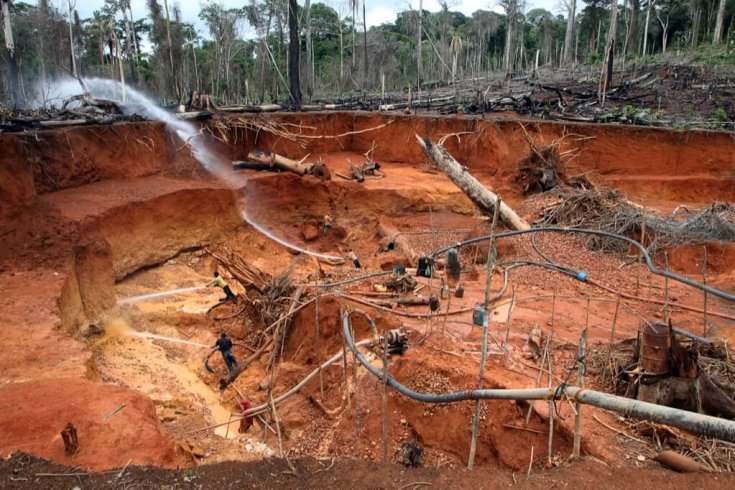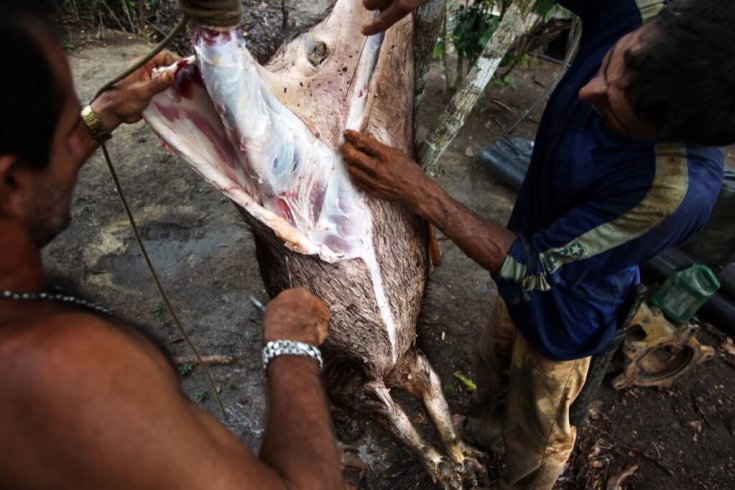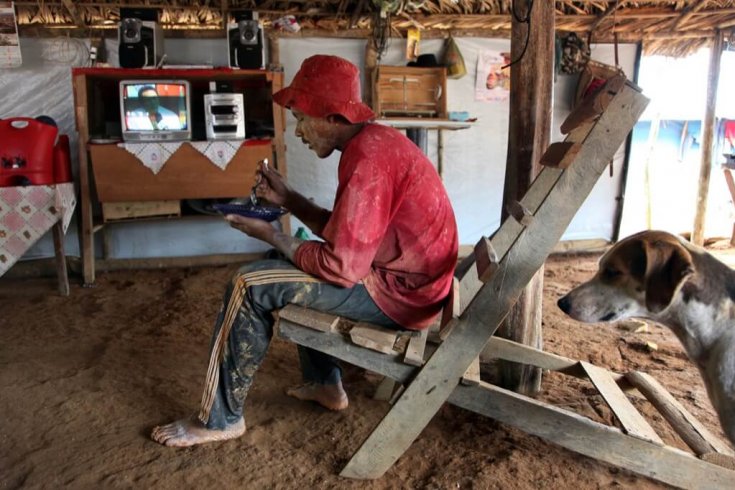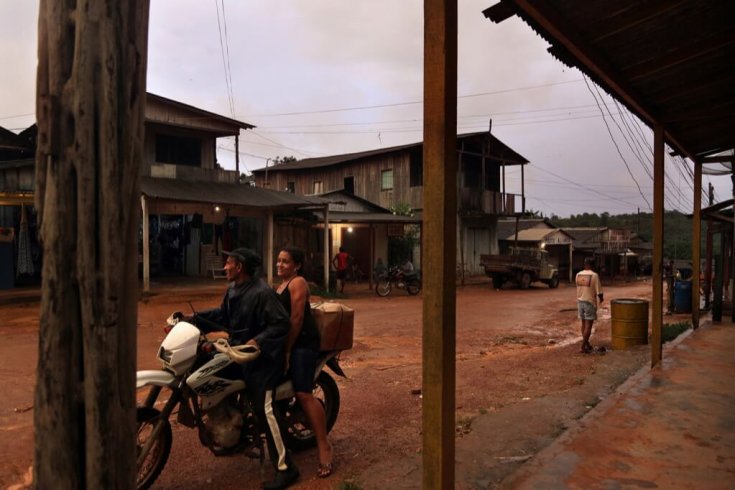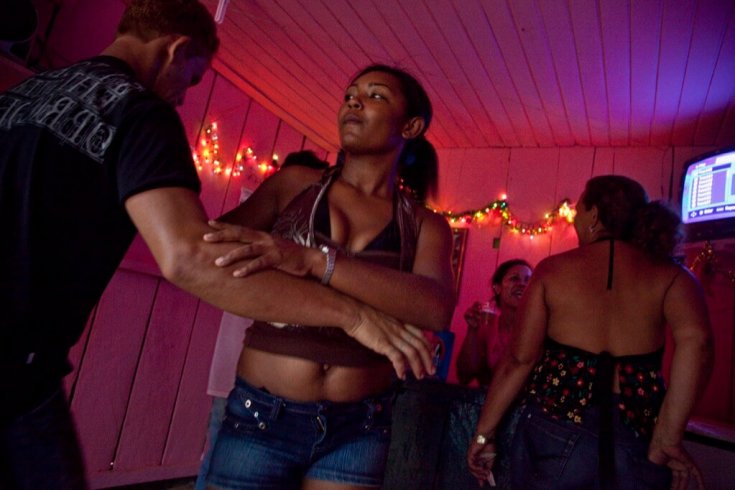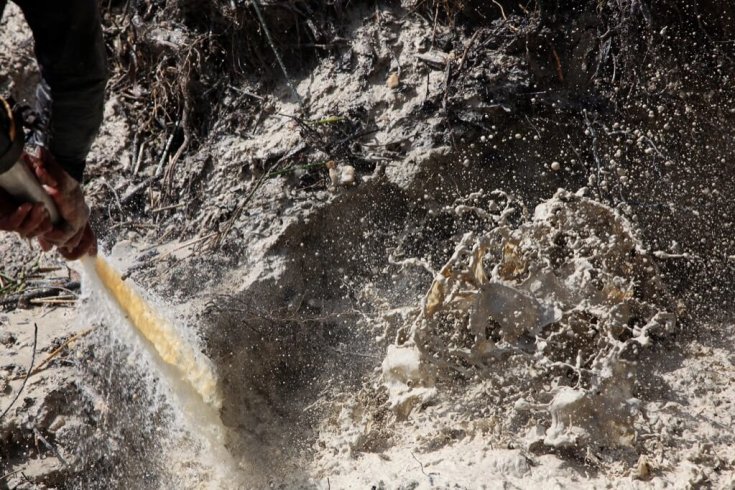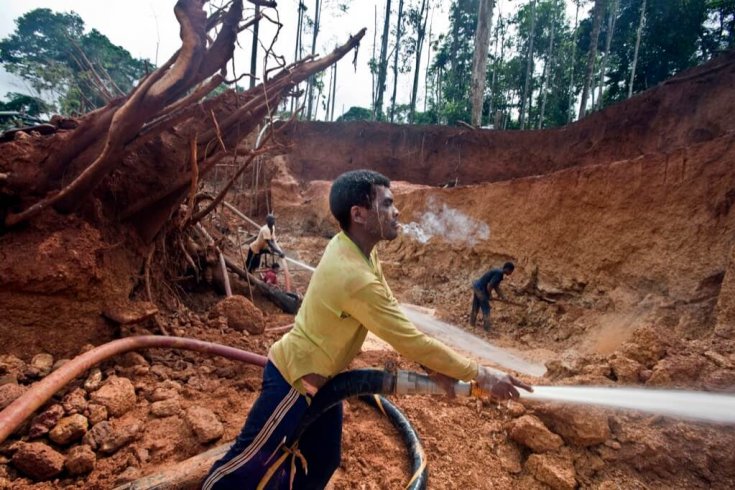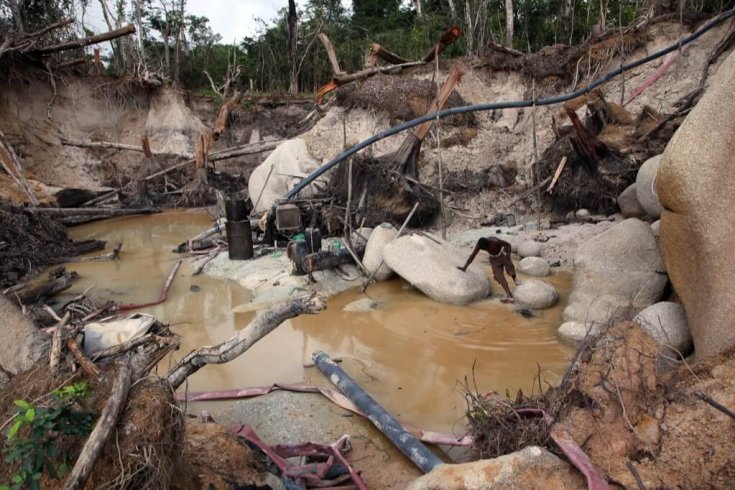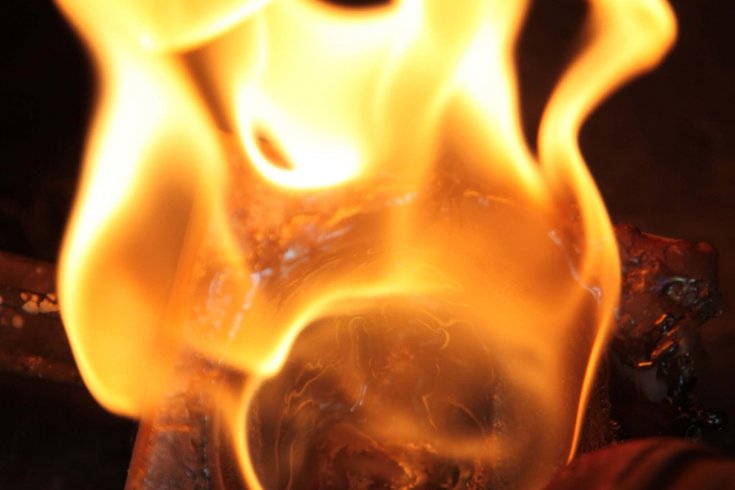We’ve all heard tales of the men who followed the lure of gold into harsh wilderness, turning over the land with brute force, often finding little more than the community of fellow dreamers. Legendary gold rushes took place in California, Victoria, and the Klondike in the second half of the nineteenth century, right around the time the camera was invented. But while portrait photography caught on quickly in cities, hauling giant glass plates into the bush was next to impossible, so the gold rush phenomenon went almost completely undocumented visually. Not until the advent of hand-held cameras like the Leica could photographers portray stories unfolding in remote locations—which is exactly what Sebastião Salgado did when the Serra Pelada gold rush broke out deep in the Brazilian Amazon, circa 1980.
When I was starting out in photography, Salgado was king. He had taken the “concerned photographer” mission global, producing massive books on broad social themes, with an unprecedented combination of artistry and salesmanship. His Serra Pelada—black and white shots of some 80,000 mud-caked miners—was an account of epic, almost biblical human undertaking. In 2007, when I read about a nascent gold rush near the small town of Apuì, on Brazil’s western border, I thought of Salgado. Of course, much has changed in the intervening twenty-five years. In today’s precarious economy, gold is perceived as a sure bet and trades at record highs. Our environmental awareness has evolved as well; it now seems odd that you hardly notice the land in Salgado’s images. Nor do they show any evidence of life outside the pit, which was just as raw. Salgado may have hit a high-water mark in documentary photography, but he didn’t exhaust his subject. I decided I had to see the gold rush for myself.
Of course, the Amazon is a monster, and sorting out the logistics proved to be an immense challenge. A couple of Brazilian photographers who’d visited Apuì in recent years told me that gold was scarce, and that the prospectors, or garimpeiros, had decamped. Further research suggested that thousands of them were scattered around the Amazon, in a slow-burning gold rush greater than any other in history. I eventually connected with a Canadian anthropologist who had studied garimpeiros working hundreds of kilometres east of the Apuì mines, so that was where I started, late last year. From the city of Itaituba, I flew over endless green jungle in a Cessna, ending up in Creporizinho, a kind of Wild West outpost.
Fifty or so clapboard buildings line the main street: a handful of stores, a gold trader, a pool hall, a dance hall, a beauty parlour, a garage (home to the town’s first truck, complete with wooden hood), a tiny police station (manned by a couple of nonplussed fly-ins), and the Três Irmãos hotel—the last reputable business before the town peters out into seedy bars with women for hire. There were always dogs lying in the streets, and plenty of people coming and going. I was introduced to a pot-bellied local who made his living driving taxi between Creporizinho and the ten or so mines in the area on his dirt bike. It was a crazy relationship: he didn’t speak any English, and I didn’t speak any Portuguese, but we spent all day pressed up against each other on this bike, navigating narrow trails that led into the jungle and invariably terminated in a low-tech open-pit mine.
Crews consisted of between six and twelve calloused garimpeiros. Rather than digging by hand, as in Serra Pelada, these guys would use river water pumped through firehoses at high pressure to dissolve the jungle floor. The hoses are like pythons in heat, and handling them for ten, twelve hours a day is an incredible feat of athleticism, but surely the less desirable job is wading hip deep through the resulting sludge to clear it of leaves, roots, and other jungle debris that can clog the drainage tubes and the sluice—the first step in separating the gold from the earth. At the end of the chain, a concession holder or a foreman recovers the spoils with drops of mercury or some other environmentally questionable chemistry, guarding them closely until he can get to a concession.
I was told that the merchants rig their scales to underpay the prospectors, but no one would reveal exactly how much they’re making—not surprising, since the area was once known for its gunfights as much as for its gold. Truth is, it’s been a long time since anyone has made a big find. Dirt poor, they have little choice but to keep hoping and, in the meantime, endure a hardscrabble life. They sleep side by side on hammocks, in shelters made out of wood or plastic sheeting, and possibly furnished with satellite television, their one link to the rest of the world for the months and months they’re out there. Generally, it’s head down, nose to the grindstone, and every once in a blue moon a trip into Creporizinho to get slammed.
It took me a while to work up the courage to shoot inside the bars; when people are drunk, you never know what’s going to happen. Also, I’d heard the bar girls referred to as “piranhas.” In fact, they were cheerful, sometimes even playful. I’d start to take pictures, and they’d pose like fashion models, mocking the camera. There was one in particular named Joella—she was maybe eighteen years old and seemed to live in the back of a bar with one of her children, her mother, and a girlfriend. She was always laughing. People generally seemed to be making the best of life, in the moment. Appropriately, one song that played constantly during my stay had an element of saudade, a Portuguese word denoting world-weary sadness, the knowledge that whatever happiness you experience will be ephemeral.
Saudade is a recurring theme in Brazilian culture, and I had plenty of time to reflect on it, lying awake at night in my room at the Três Irmãos, conveniently located directly across from the rowdy dance hall. Still, I was lucky to have a place to sleep at all. I’d arrived in town to discover that the entire hotel was rented out to a drilling crew on contract to Magellan Minerals, a Vancouver mining company. The Surinamese master driller was kind enough to let me spend nights in his bed while he was off scouting bankable deposits. Magellan is one of many large international companies moving into Brazil with heavy machinery, and opinion is divided on whether they’ll do less damage to the environment than the garimpeiros. On the one hand, they have the capacity to drill deeper, which means they won’t have to destroy as much of the jungle floor; on the other, they have the means for many more and much larger-scale operations. The question few ask is what will happen to the garimpeiros.
But it’s already happening: the Brazilian government is cracking down on unsanctioned, read artisanal, mining operations. It would seem that this is the end of an era. People will continue to exploit virgin territory all over the world, but nobody will be doing it barefoot, with a firehose. Salgado wasn’t wrong about the epic nature of that work, especially when you compare it to how white-collar gold traders spend their days. But unlike him, I can’t see the story in simple terms. There are no heroes and no villains, just competing interests. Digging for gold, the most primitive form of wealth, in the most pristine jungle left on earth, and then blowing your meagre earnings on sex—when you put it all together, it seems to get at the most fundamental of human desires.
This appeared in the January/February 2011 issue.


